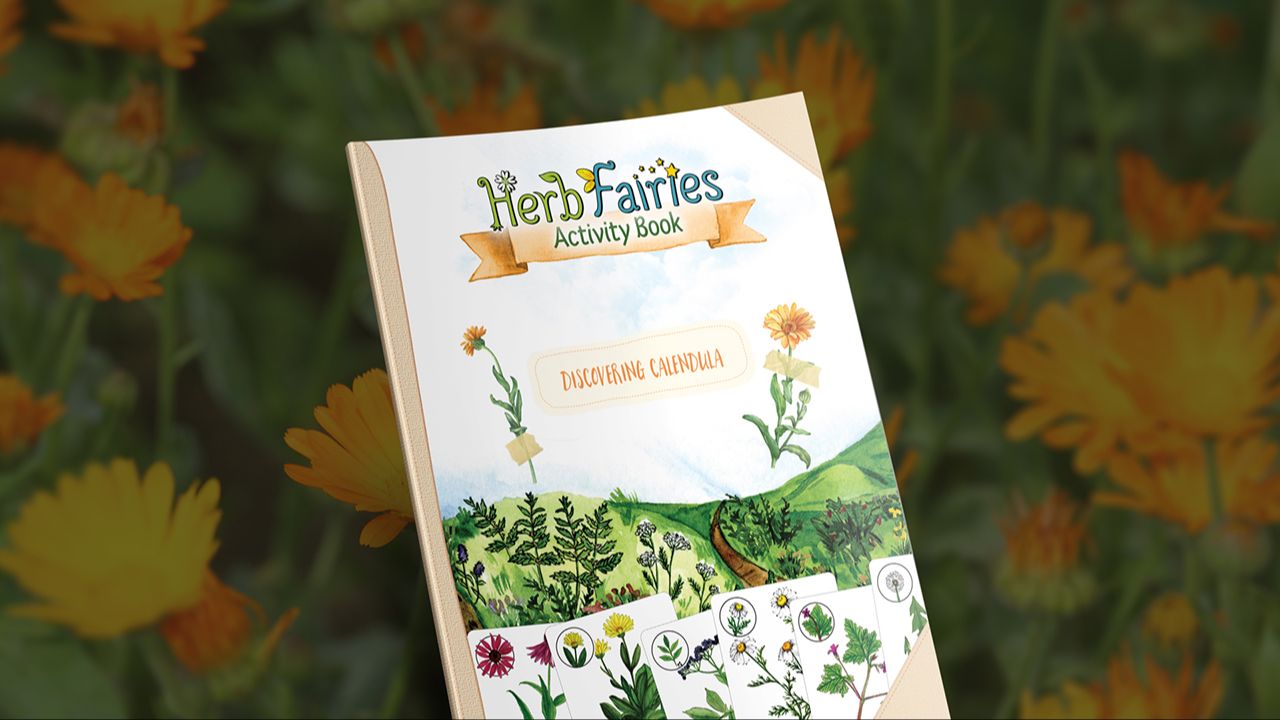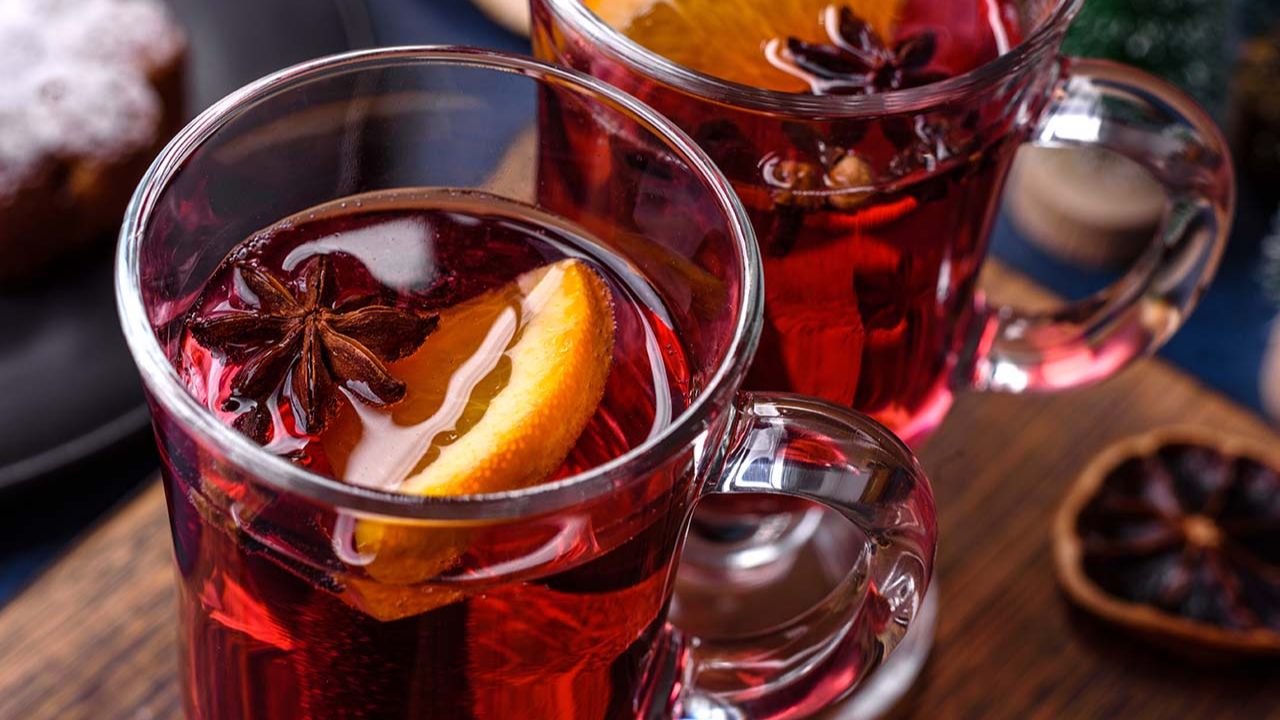
Prickly Pear Uses and Plant Monograph
Growing up in Chicago, a city with a rich mix of immigrants from Mexico, Guatemala, El Salvador, and Puerto Rico, I often visited small, independently-owned Latino grocery stores. These stores thoughtfully curated and imported produce, helping us carry on the food traditions of our respective homelands. Finding prickly pears cactus pads, de-spiked and wrapped in the prepared food section was a common sight in many such markets across the city. It was surprising to see the spike in popularity of the plant shift dramatically amongst the American population as compared to my childhood. Now in various cities across the country, it is common to find the pads and fruits in commercial grocery stores.
After my love for plants and their ancestry came to fruition, I learned that relatives of prickly pear grow all around Turtle Island (a name for Earth, North America, or the Americas used by some Indigenous peoples of the modern-day Americas). In some of the sandy preserves surrounding the Chicago area, the Eastern prickly pear cactus can be wildharvested in late summer to early fall, around August to September. As an herbalist with Indigenous and Caribbean ancestry who was then born and raised in Chicago, the prickly pear cactus is a plant that comforts with its adaptable and expansive presence, growing abundantly throughout Turtle Island.
The adaptable prickly pear cactus belongs to the Cactaceae or cactus family. Like most true cactus species, prickly pears are only endemic, or native, to the Americas. Throughout these lands, the plant (both the pads and fruit) has been used creatively to make various preparations such as dye for clothing, jams, teas, and diverse recipes and beverages.
Prickly Pear Uses and Plant Profile Summary
-
Botanical Name: Opuntia spp.
-
Other Common Names: paddle cactus, cactus pear, barbary fig, mission cactus, mission fig, tuna, sabra, sabbar, nopal (from the Nahuatl word nōpalli), nostle (from the Nahuatl word nōchtli)
-
Family: Cactaceae
-
Parts Used: fruit, pad
-
Energetics: cooling, moistening
-
Taste: pads—mild, earthy, cucumber-like, slightly tart, succulent; fruit—sweet, melon-like
-
Plant Properties: antidiabetic/hypoglycemic, anti-inflammatory, antioxidant, digestive, diuretic, hydrating
-
Plant Uses: diabetes, constipation, indigestion, irritable bowel syndrome (IBS), liver tonic
-
Plant Preparations: tea, poultice, jam, syrup, oil, food
Cultivating Prickly Pear
CAUTION: When handling prickly pear cactus, always wear heavy-duty gardening gloves to protect your hands from the plant’s sharp spines, which can cause painful injuries and be difficult to remove.
Propagation from prickly pear pads is much simpler than growing the plant from seed, and also yields much faster results. To cultivate prickly pear this way, prepare a small container with well-draining soil and set aside. Start with a mature, disease-free prickly pear cactus that is actively growing. Select a top oval segment at least one-inch long, avoiding paddles that are already in bloom.
Wearing heavy-duty garden gloves, twist the paddle gently at the natural seam to remove it, ensuring the entire base and meristem are intact; use a clean knife if needed. Let the cutting dry on a paper towel for at least 24 hours to form a callus, which prevents rot. Optionally, the cut edge can be dipped in rooting hormone powder diluted in water.
Bring out the potted soil and plant the callused cutting by inserting one-third of it into the soil, cut side down. Mist the soil to keep it evenly moist, avoiding the top of the cutting, and maintain consistent moisture in a warm room with filtered sunlight until roots develop and the cactus is ready for direct sunlight and reduced watering.
Again, this process of cultivation is much more efficient than growing from seed. The initial growth from seed is slow and it may be as long as 3 to 4 years before the new plant produces any flowers and fruit.
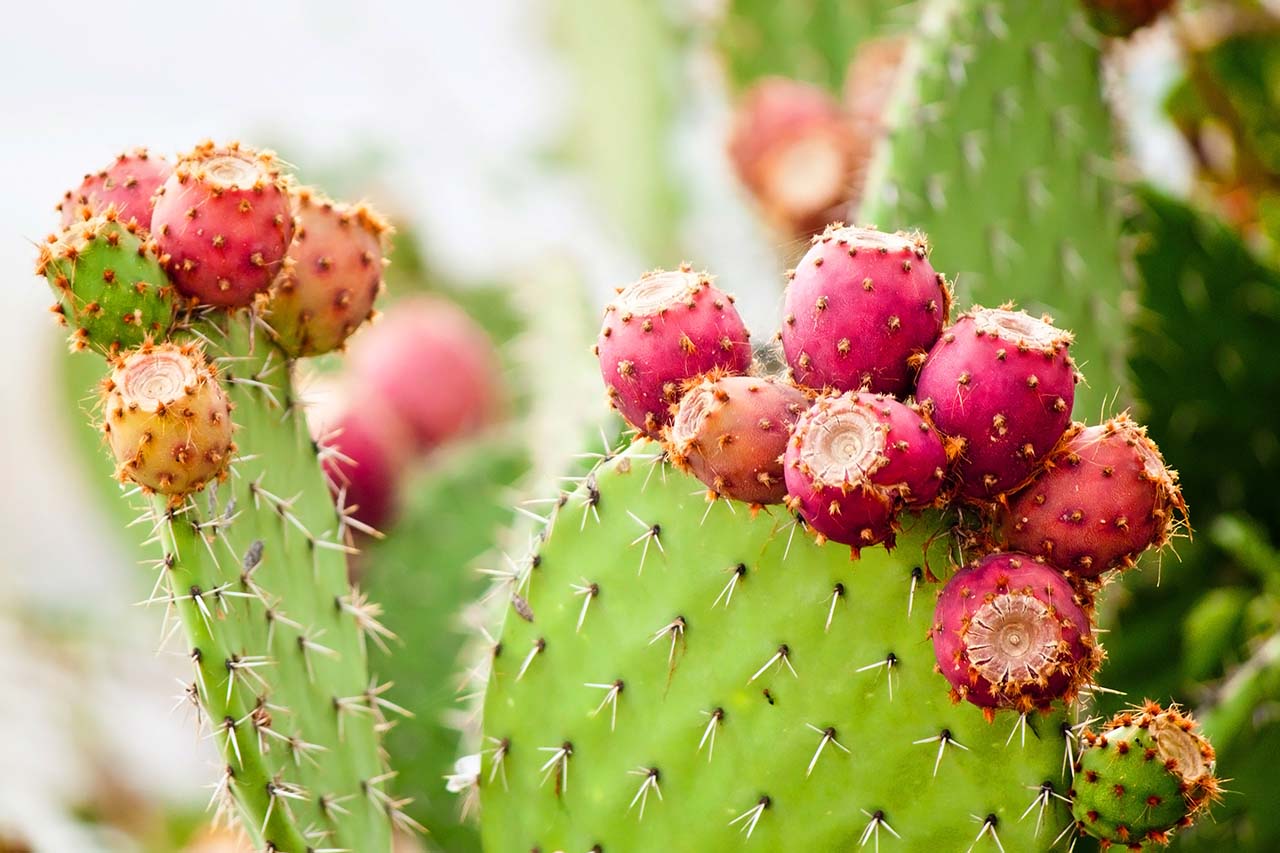
Prickly Pear for Hydration
Cactus water has recently emerged in the natural beverage market, joining other plant-based drinks such as coconut water and aloe vera juice. Typically produced by extracting juice from the red or pink fruits of the prickly pear cactus, cactus water has a distinct pink hue that is carried into the water. This beverage is naturally low in sugars, while being rich in antioxidants and electrolytes such as magnesium, calcium, and potassium. For this reason, it is often promoted to athletes as it aids in hydration as well as fluid balance and muscle control.1
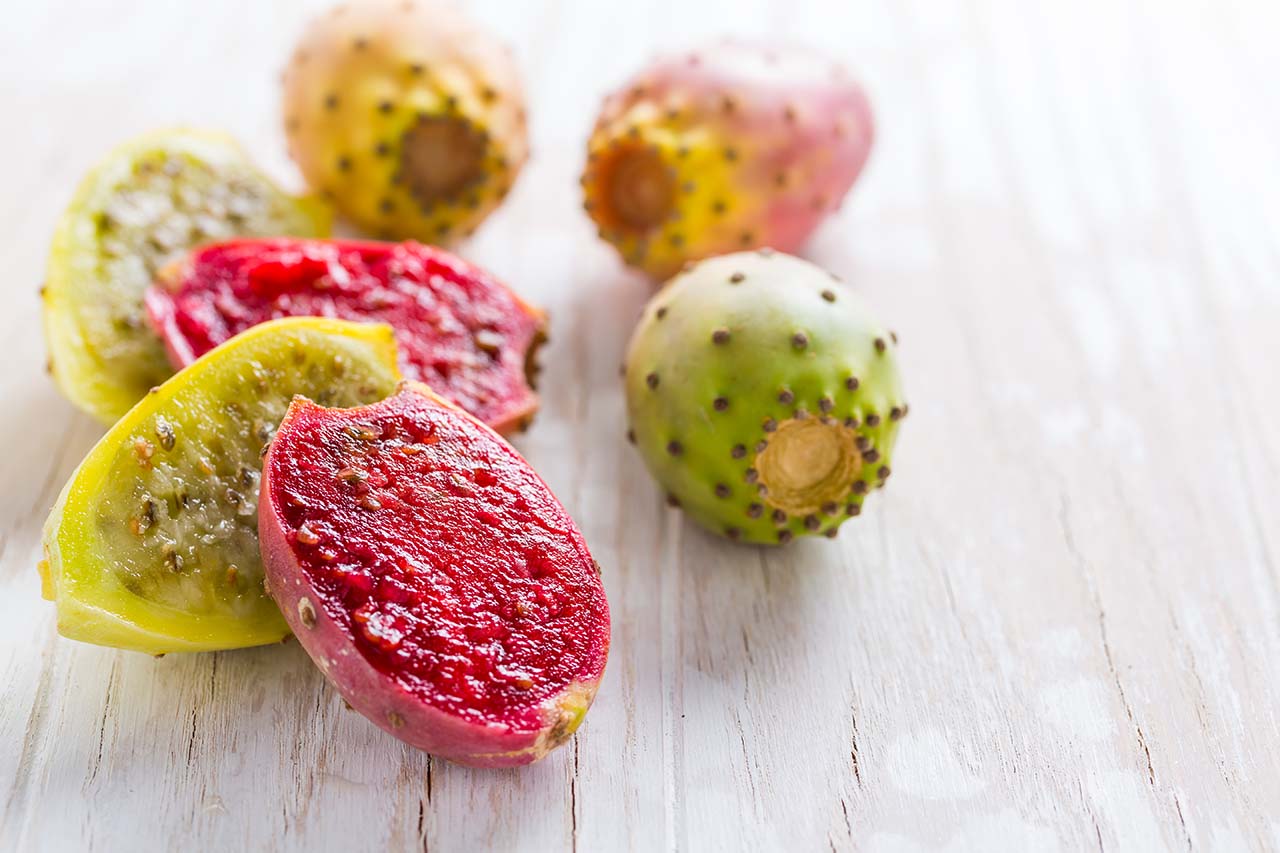
Prickly Pear Seed Oil for Skin
Prickly pear seed oil has found its way to more high-end, artisan cosmetic brand’s serums and cleansers. Several companies now extract oil from the prickly pear seeds and offer it as skincare products suitable for all skin types, including acne-prone and dry skin. It is not surprising as prickly pear oil is highly moisturizing and rich in essential fatty acids, omega-6 and -9, and vitamin E. It offers antioxidant, anti-inflammatory, and anti-microbial benefits, stimulates collagen production, promotes cell turnover, and contains vitamin K, which may improve skin elasticity and brighten under-eye circles. This oil has been shown to hydrate the skin to enhance complexion by brightening skin tone and reducing dark circles.2
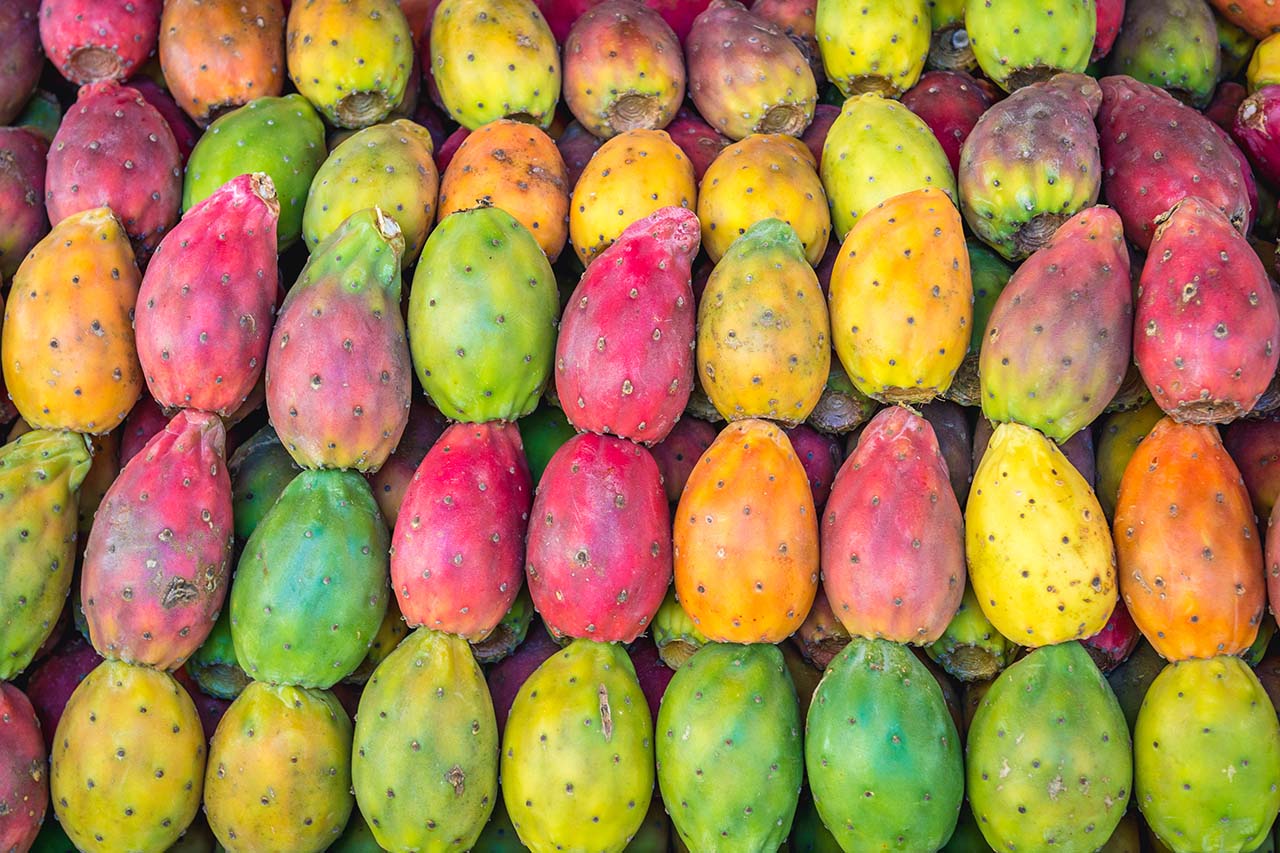
Prickly Pear Fruit for Dye
The fruit of the prickly pear cactus is most known for its deep, rich red color, but the fruits can also be green or yellow-orange depending on variety and ripeness. The pigment responsible for the red color in prickly pears is betalain. This is the same pigment that imparts the deep, purplish-red hues to beets and bougainvillea flowers. However, betalain is somewhat unstable and degrades when exposed to light and heat.3
Cochineal is a natural red dye derived from cochineal insects (Dactylopius coccus), which are small parasitic bugs that can infest and live on prickly pear cacti. They feed on the sap of prickly pear cacti. These cacti provide the necessary nutrients for the insects to thrive. The cochineal insects are harvested from the prickly pear cacti after its life cycle is complete, meaning it is not killed for the dye. After collection, the insects are dried and crushed to produce a red pigment known as carminic acid. The carminic acid extracted from cochineal insects is processed to create cochineal dye, a vibrant and stable natural red dye.
Indigenous Americans, dating back 2,000 years, used and continue to use cochineal dye for textiles. This practice ranged across regions, from the Aztec and Mayan peoples of North and Central America to the Taíno peoples of the Caribbean. In addition to the cochineal method of dyeing textiles, some indigenous dyeing preparations call for the cloth to ferment in prickly pear juice for several days.
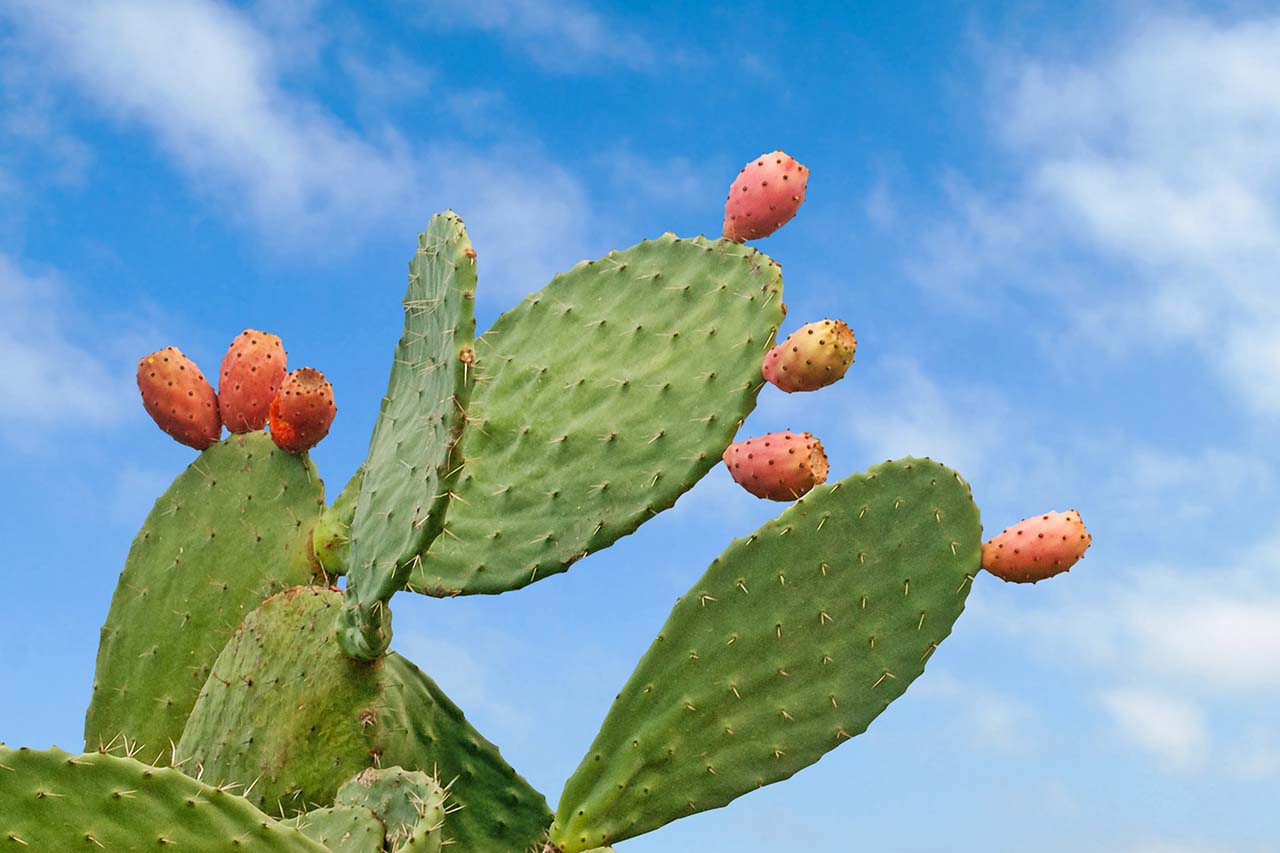
Prickly Pear for the Gut & Diabetes
Both the fruit and pad of the prickly pear cactus are a friend to the gut. The fiber found in prickly pear aids in promoting regular bowel movements and helps eliminate toxic substances from the digestive tract. Additionally, research indicates that specific compounds including the betanin in prickly pear may offer protection to the gut lining, reducing the risk of ulcer formation.4
Research has indicated that the bioactive compounds in prickly pear may affect glucose metabolism by enhancing insulin sensitivity, decreasing insulin resistance, and altering the composition of gut microbiota.5 Prickly pear fruit can reduce blood sugar concentrations by 20–30%.6
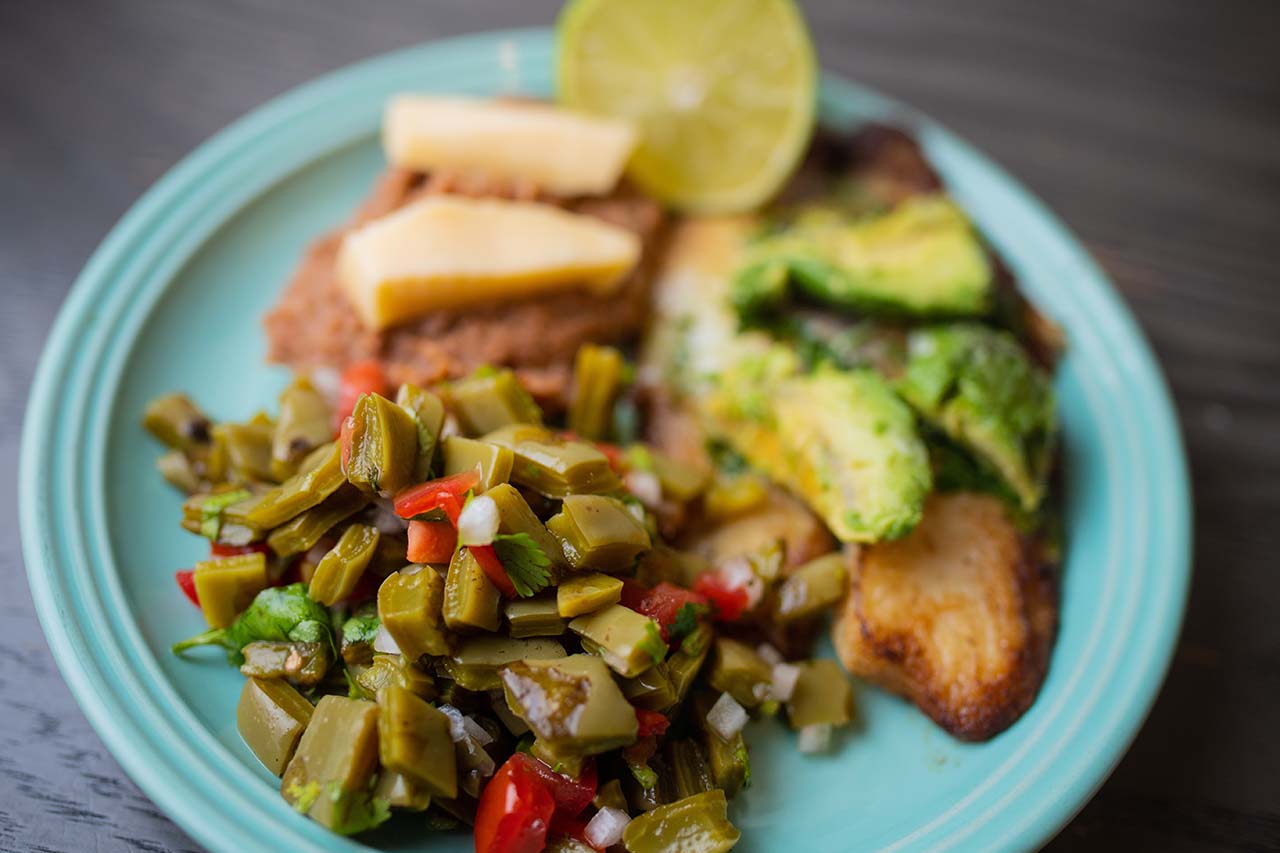
Prickly Pear as Food
Prickly pear fruits are used for a variety of foods, especially the fruit for syrups, candies and jellies. The fruits are sweet, very nutritious, and a good source of vitamin C — making it a preferred fruit to turn into jellies and jams. There is no evidence of any Native American tradition of making jelly from prickly pear fruits. It is likely that a practice that comes from European colonial settlers, who lived in colder climates and needed to process and store food for the winter months7 as well as seafare and travel.
Today, you can buy prickly pear cactus pads at many grocery stores, especially those serving Latino neighborhoods and communities. It is best to choose the greenest, most unblemished pads. Be cautious of spines when using cactus pads for cooking and take your time to remove them all before using. The grocery store often removes the long spines before packaging, but the tiny fuzzy spines will likely still be there. You can easily remove, or clean, the pads by using a sharp knife at a slanted angle to skim the top of the pad. You can use a fork to hold the pad in place to avoid touching the spines with bare hands.
Nopalitos
Nopalitos are a traditional food made from the young, tender pads of the prickly pear cactus, known as nopales. They are commonly featured in Mexican cuisine and have been a dietary staple in the surrounding regions for centuries. Nopalitos are prepared by removing the spines and thorns from the cactus pads, then slicing them into strips or small pieces. They can be boiled, sautéed, grilled, or eaten raw. They are often incorporated into various dishes such as salads, soups, tacos, and scrambled eggs and can be bought as pickled preserves.
Ingredients
- 3–4 small to medium prickly pear paddles
- ¼ teaspoon of ground black pepper
- ¼ teaspoon of garlic powder
- ¼ teaspoon of ground coriander
- ¼ teaspoon of paprika
- ¼ teaspoon of kosher salt
- 3–4 tablespoons of sunflower oil
Instructions
- Using a fork on one end to keep the pad still, use a knife or potato peeler to scrape off the spines and “eyes.” It is recommended to trim off the rough edges.
- After peeling, chop or slice the pads into small chunks. If you want to minimize the slimy texture, cover the cactus in salt for 20 minutes and rinse thoroughly with cold water.
- In a large frying pan on medium-high heat, add the oil and wait for it to warm. Then add the cactus and spices. Bring down to medium-low heat for about five minutes or until tender. Serve warm.
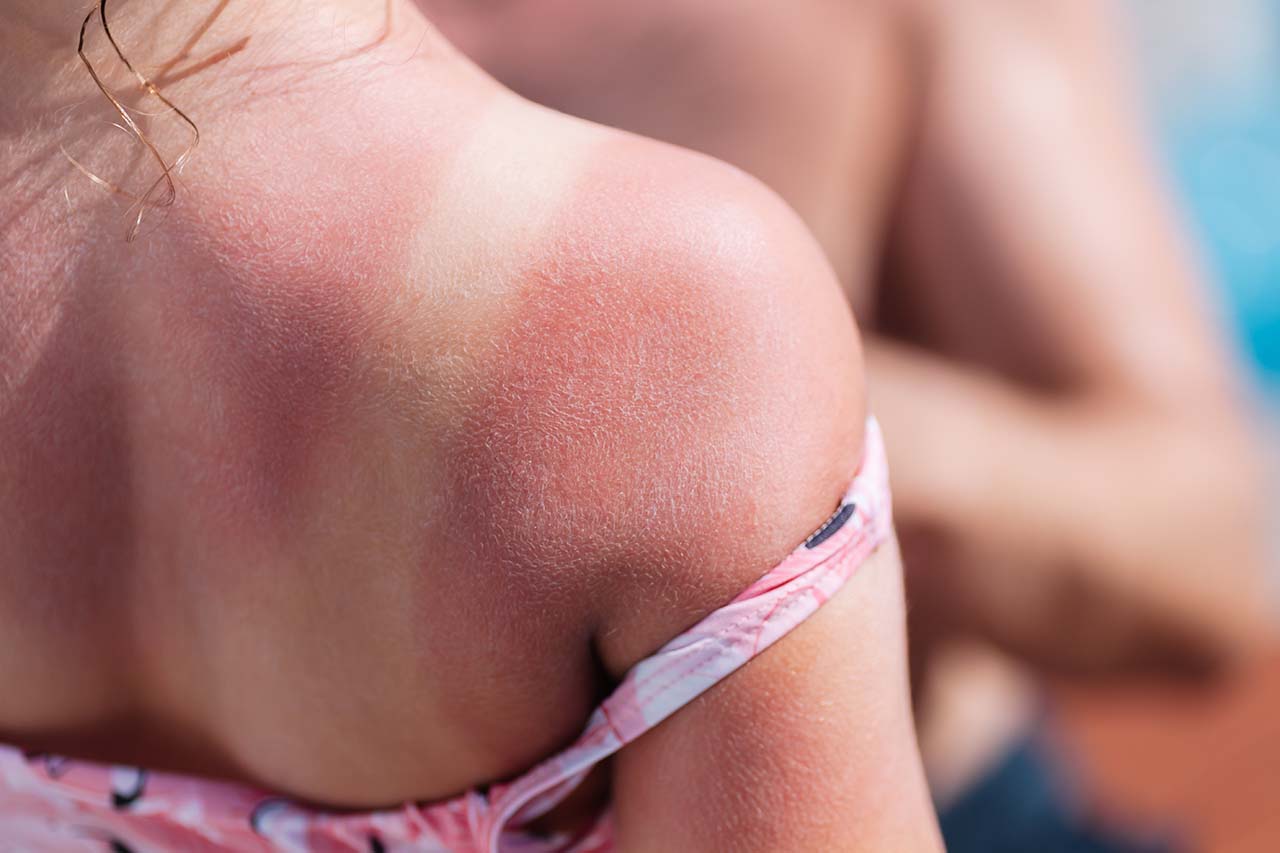
Prickly Pear Pulp for First Aid
Prickly pear pulp applied directly on the skin has strong anti-inflammatory properties. It prevents the buildup of excess fluid in injured tissues, which makes it an excellent option for treating sprains, strains, broken bones, and sunburns.
The pulp can also act as a natural sunscreen, providing protection when you're outdoors for long periods. It has a low SPF of about 10, so it’s important to reapply frequently by rubbing the pulp on your skin. If sunburned, the pulp’s cooling and anti-inflammatory properties can soothe and relieve pain, similar to aloe vera.
Prickly Pear Pulp Poultice
Using this poultice on sprains, strains, broken bones, and sunburns may alleviate pain, reduce swelling and bruising, and accelerate tissue healing. Additionally, the pulp acts as a powerful agent to draw out splinters, toxins, and even venom from bites.
Ingredients
- Fresh prickly pear pulp
Instructions
- Carefully remove the skin and spines from the prickly pear fruit.
- Scoop out the pulp and mash it into a smooth paste using a mortar and pestle. Optionally, you can blend the pulp as well. Be careful not to blend too much or else the pulp will be very thin.
- Spread a generous amount of prickly pear pulp directly onto the affected area (such as sprains, strains, broken bones, or sunburns).
- Use a clean cloth or bandage to cover the area with the pulp. Secure it in place, making sure it stays in contact with the skin.
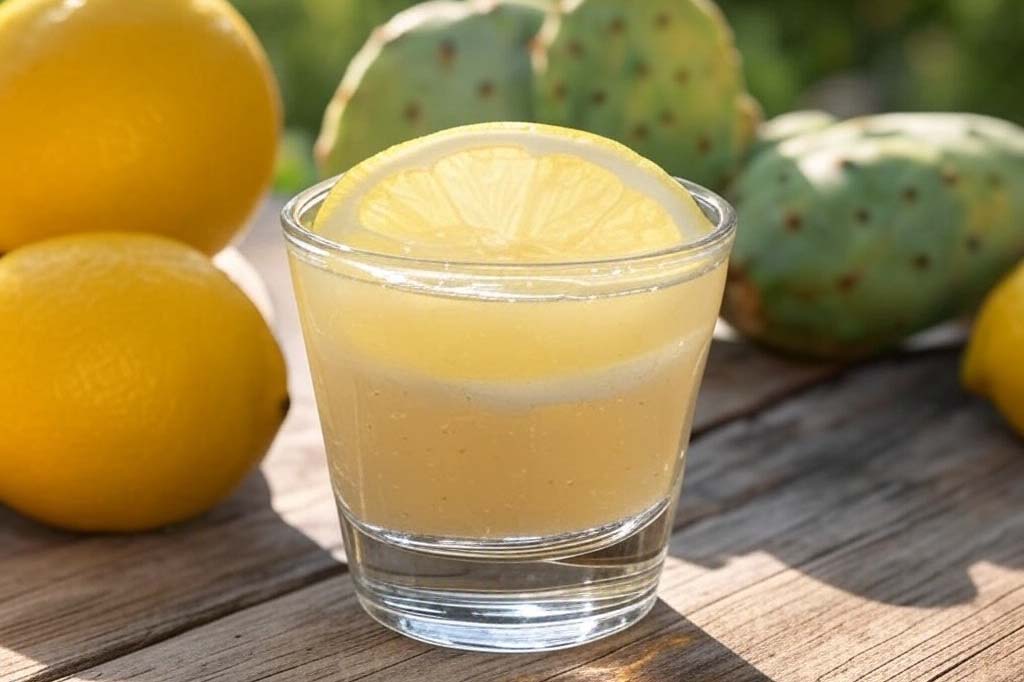
Traditional Uses of Prickly Pear
Indigenous peoples of current day Mexico, Central America, and Caribbean have utilized the prickly pear (or tuna in multiple Native languages) for centuries, not only for its nutritional value but also for its medicinal properties particularly being rich in antioxidants.
Agua de Tuna
Agua de Tuna, a refreshing beverage made from the fruit of the prickly pear cactus, has deep roots in Mexican culture and history but can be found across parts of Latinidad with variations on the recipe.
Ingredients
- 3 pounds of fresh prickly pears, spines and skin removed
- Lemon juice, freshly squeezed (to taste)
- Raw honey or agave syrup (to taste)
- Filtered water, enough to cover the fruit
Instructions
- Carefully remove the outside of the prickly pears and place the prepared fruit in a pot. Pour water until the fruit is covered.
- Bring the water to a boil, then turn off the heat. Allow the mixture to cool down until it’s safe to handle, and then mash the fruits together using a potato masher.
- Use a fine sieve and a rubber spatula to press the mixture through, making sure to remove the numerous seeds. Repeat two or three times until seeds are removed.
- Sweeten the juice to your preference by adding raw honey and/or freshly squeezed lemon juice until you achieve the desired level of tanginess. Serve agua de tuna chilled or over ice.
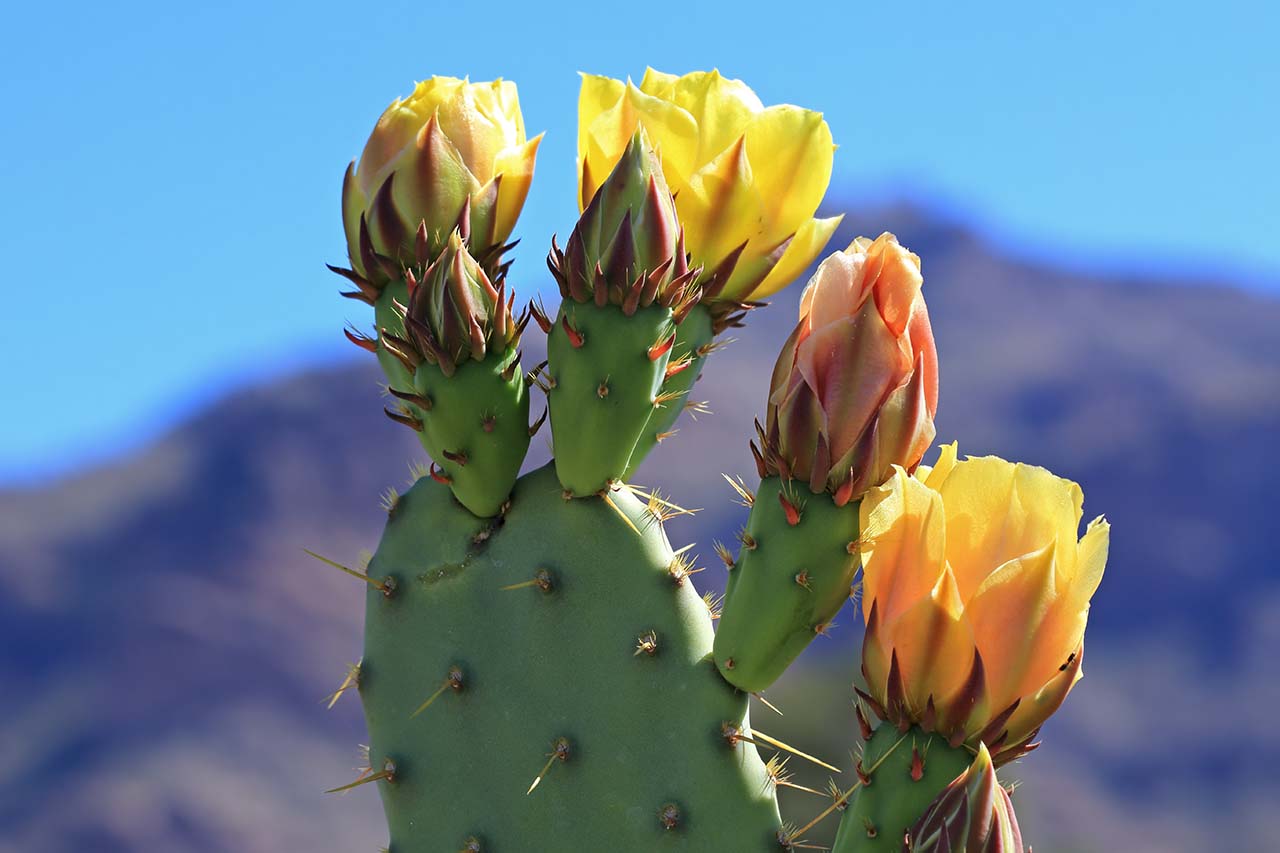
Botanically Speaking
The prickly pear cactus (Opuntia spp.) is a succulent characterized by flat, paddle-shaped pads adorned with sharp spines and small, hair-like glochids. Its striking funnel-shaped flowers bloom in vibrant hues of yellow, orange, or pink, creating a beautiful contrast with the rich green of the cactus pads. The flowers are 2 to 3 inches wide, with one pistil, seven sepals, and seven or more petals.
There are various types of prickly pear cacti, each varying in size. An average size prickly pear would be about 5 feet tall and 10–15 feet wide at full maturity. Prickly pear cacti are found in washes, rocky hillsides, around boulders, and in sandy or gravelly soil, and are known to live for over 20 years in cooperative climates.
As mentioned before, prickly pears are only endemic, or native, to the Americas. However, prickly pear cacti have adapted and different species now grow in almost all the continents. In Mexico, particularly in the central and western regions as well as the Caribbean islands, prickly pear species are abundant and grow freely. On the East Coast, stretching from Florida to southern Connecticut, some species thrive in sandy coastal beach scrub environments. Some species are native to arid, semi-arid, and drought-prone areas of the Western and South Central regions of the United States, including the lower elevations of the Rocky Mountains and the southern Great Plains. Several species of prickly pear cacti are also found in the desert Southwest. Additionally, this cactus grows in the Midwest’s “sand prairies”. Interestingly, some species of prickly pear are the most cold-tolerant of the lowland cacti, and can be found growing into western and southern Canada.
Prickly pears have now been spread by humans to many other parts of the world from regions of the Mediterranean to the Galápagos Islands. Unfortunately, prickly pear is now considered an invasive species in places such as Ethiopia, South Africa, and Australia.8
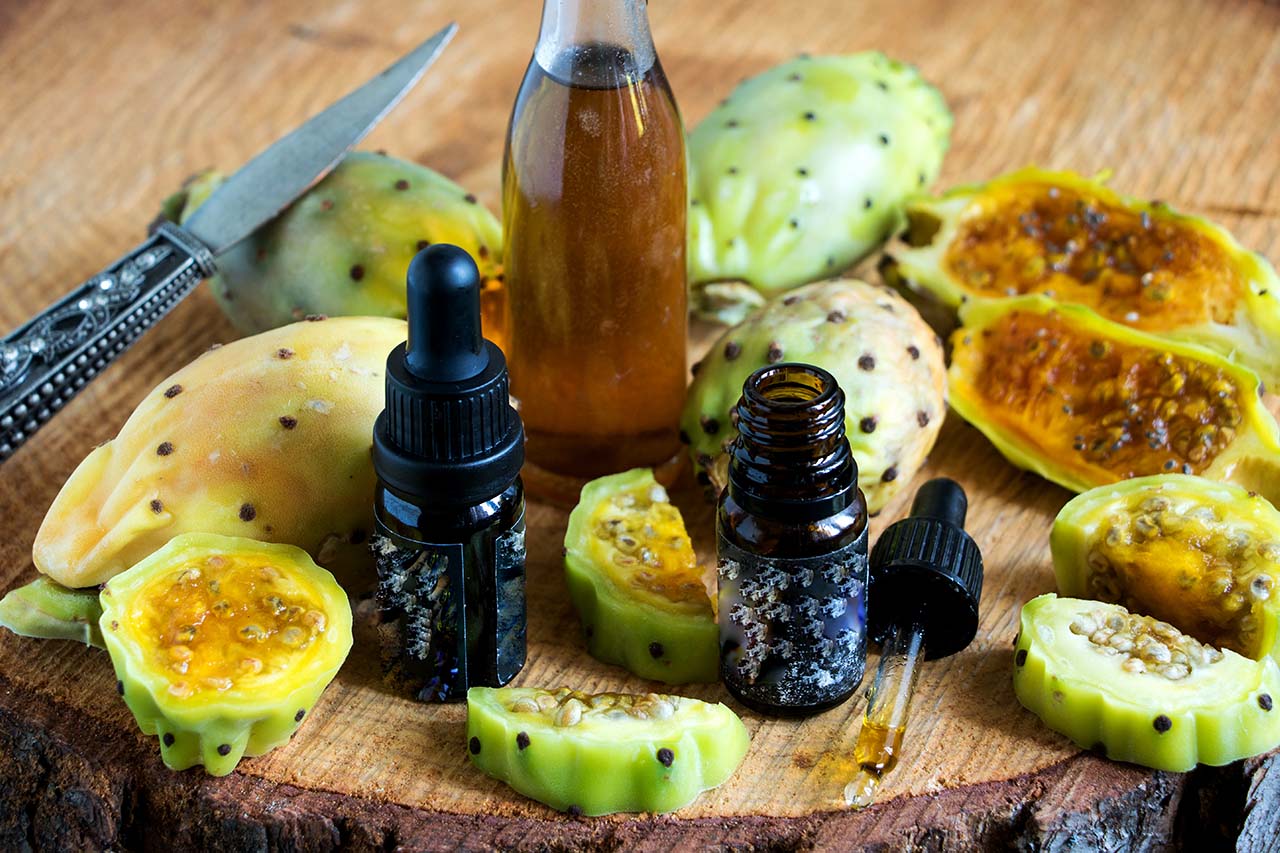
Plant Preparations and Dosage Suggestions
For adults, a serving size of 1 large cactus pad or 2 small-medium sized pads is recommended. For children, the serving size is 1 medium-sized pad.
A serving size of raw prickly pear fruits is one cup for adults, and ½ cup for children.
You can prepare a tincture from the fruits, using a ratio of 2 peeled, ripe medium-sized prickly pears to 1 cup of 80-100 proof alcohol. Store for at least six weeks in a cool, dark location, then taste test after properly straining. A serving size of the tincture would be a ½ teaspoon diluted in water taken three times daily.

Special Considerations
Prickly pear cactus is generally considered safe for consumption as food, with the pads and fruit posing minimal risks when used medicinally for short durations. However, some individuals may experience mild side effects such as diarrhea, nausea, bloating, or heartburn. Excessive consumption of prickly pear can lead to issues associated with high fiber intake, including diarrhea, indigestion, bloating, or nausea. Rare instances of bowel obstruction have been reported due to the ingestion of prickly pear fruit seeds.
There is not enough reliable information to know if prickly pear cactus is safe to use when pregnant or breastfeeding, therefore it is recommended to keep to regular food amounts.9 And remember, when handling prickly pear cactus, always wear gloves to protect your hands from the plant’s sharp spines, which can cause painful injuries and be difficult to remove.



